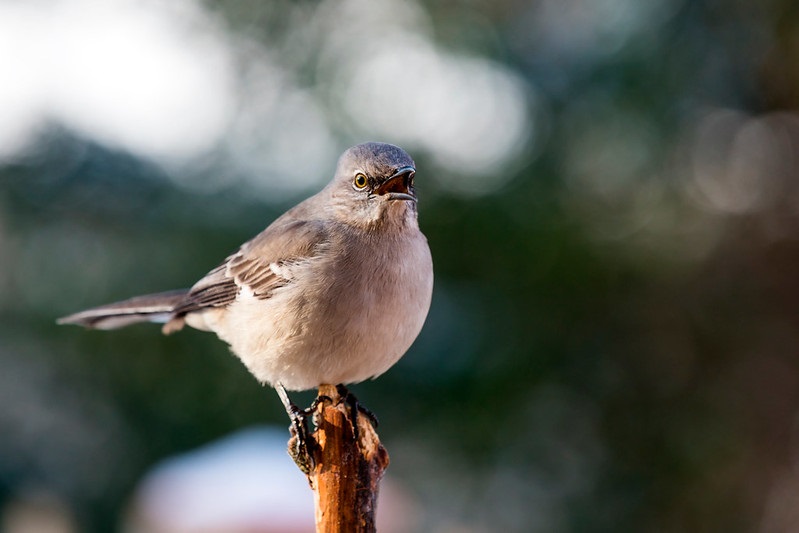Syndicated News Column:
Hummingbirds And Mockingbirds
A hummingbird drinking nectar from a flower. (Image was provided courtesy of GeorgeB2 through Pixabay.)
“Hummingbirds are only found in the western hemisphere,” according to the United States National Park Service. “Most of the more than 300 species of hummers live in Central and South America. About 26 species visit the United States during part of the year and 17 breed here.”
The National Park Service also reported that “Hummingbirds that breed in North America overwinter in Mexico, though migration corridors [throughout the United States] vary by species.”
“This male broad-tailed hummingbird shows off his bright gorget feathers [brilliant throat feathers]”,
according to the United States National Park Service. (The image was produced by
Ms. Sally King and was provided courtesy of the National Park Service.)
Hummingbirds are voracious eaters. “To sustain their supercharged metabolisms, hummingbirds must eat once every 10 to 15 minutes and visit between 1,000 and 2,000 flowers per day,” according to the National Audubon Society. “Hummingbirds are specialized aerial hunters, and can snatch small insects from the air. Hummingbirds also glean insects from leaves and from spider webs.
In addition, the National Audubon Society reported that hummingbirds like to be clean: “Hummingbirds like to bathe frequently – even in the pools of droplets that collect on leaves.”
A hummingbird as seen at the Quabbin Reservoir near South Athol, Massachusetts, in 2012.
(Image was produced by Mr. Bill Thompson and was provided courtesy of the United States Fish and Wildlife Service.)
The northern mockingbird is seen here perched on a tree branch in Florida.
(Image was provided courtesy of Rick [dirtdiver38] through Pixabay.)
The mockingbird is a very popular bird with a number of state governments. This specific bird is the state bird symbol for Arkansas, Florida, Mississippi, Tennessee, and Texas. It should be noted that the mockingbird formerly was the state bird symbol for another state – South Carolina – but that state rescinded that designation for the mockingbird; the Carolina wren is now the state bird symbol of South Carolina.
“The mockingbird is well known for mimicking many sounds,” according to the State of Maryland Department of Natural Resources. “They can sing up to about 200 songs and can make sounds like insects and amphibians. They can also imitate sounds like a barking dog, farm animals and a squeaky hinge. Sometimes they sing all night.”
You can hear sounds of a northern mockingbird by clicking here for a link provided courtesy of The Cornell Lab of Ornithology of Cornell University.
In 2018, this northern mockingbird was seen at the Shenandoah National Park in Virginia.
(Image was produced by N. Lewis and is provided courtesy of the National Park Service.)
According to the United States Geological Survey (USGS), identification tips for a northern mockingbird include a “gray head and upperparts, yellow eye[s], white underparts, [a] long black tail with white outer tail feathers, white wing bars…[and] black legs.”
© 2019 Richard McDonough




